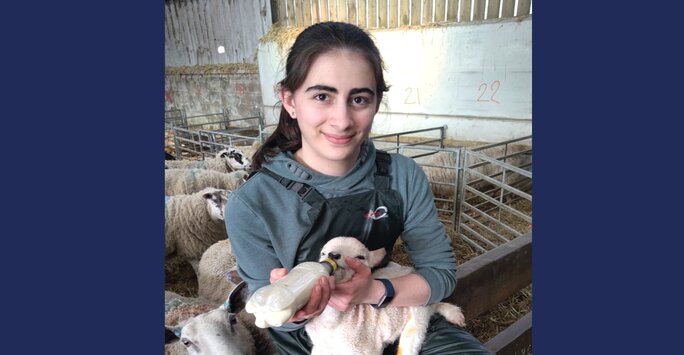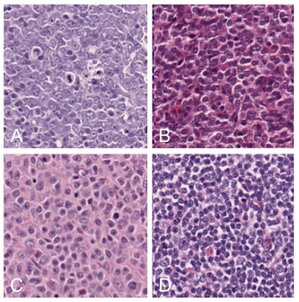
Magdalena Hubbard Pérez is a fourth-year undergraduate student in the School of Veterinary Sciences. She recently had her third-year research project published on training Artificial Intelligence (AI) to distinguish different canine tissue samples to diagnose specific tumour types.
The type of tumour I was working with in this project was canine lymphomas, a tumour of the lymph nodes in dogs. Lymphomas can be differentiated into subtypes, and I worked with three of these to train the AI system. I also used hyperplastic (overactive) lymph nodes in my model in order to train it to be able to differentiate a tumour from a non-tumour active lymph node. Enlarged lymph nodes were sampled and I used the already diagnosed microscopic images to train the AI using a specific type of machine learning called deep learning. This type of machine learning is made from networks influenced by the human brain.
Using AI for pathology has started to become more popular in recent years, due to it starting to become more digitally accessible. However, research for animal pathology is less common compared to human which meant that my research on canine lymphomas is quite novel. My project showed that it is possible to diagnose lymphomas with very high accuracy and is the starting point for much more in-depth research on this topic.
.jpeg)

Examples of the images used to train the AI
This was the first time I had worked on a research project outside of high school so it was quite daunting at first along with the fact it also involved quite a bit of computer science/AI knowledge which was new to me. I was very grateful to have had a project in this field as it is very new and great to be learning and be involved with such cutting-edge research.
All of my research was conducted within the DiMo (Digital Morphology) Lab, a lab full of many different technologies available to study the morphology of specimens. With the guidance provided by staff, I was able to use a supercomputer to train my AI model to differentiate between the tissue samples given. Having access to these technologies helped make this project happen, it was an invaluable experience, and it was really impressive to see how quickly those computers worked.
When I first started my project, I couldn’t have imagined that it would have been published, let alone that I would be the first author! This experience has taught me so much about the world of research, and I am so grateful that I was able to become published. It’s made me more interested in being involved in non-clinical work such as research in the future.
Magdalena's paper is available to read via the Frontiers website.